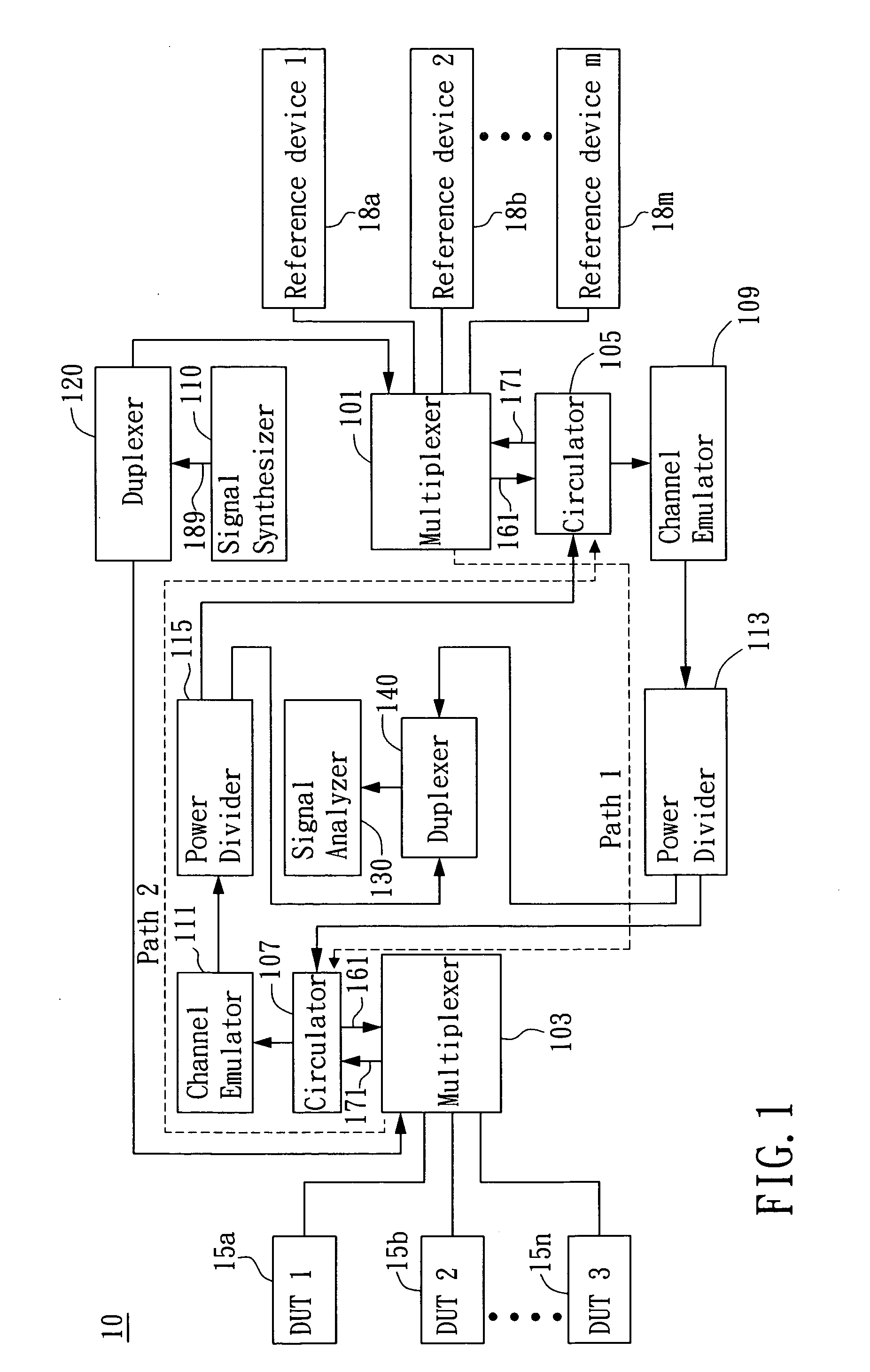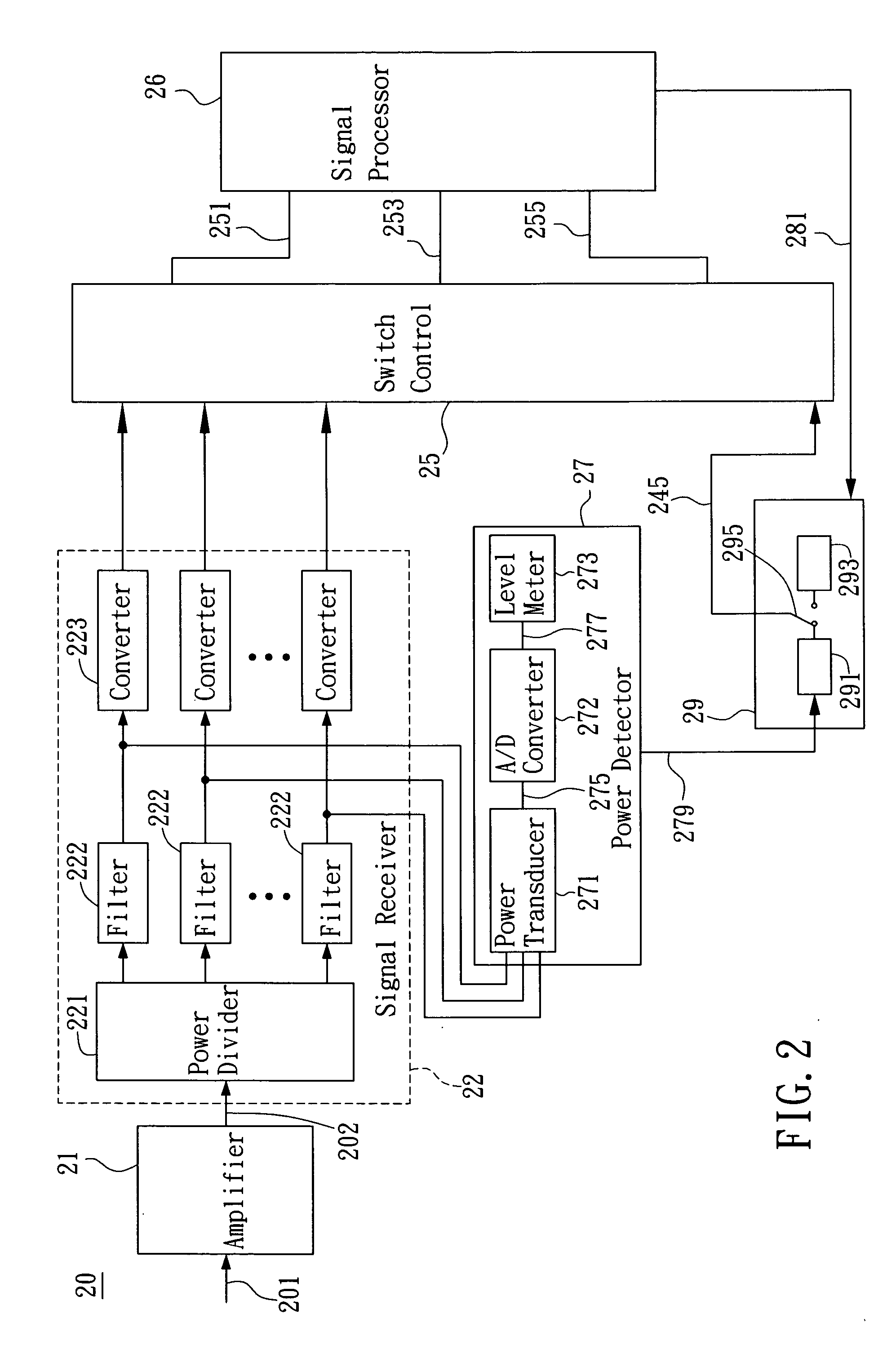Signal testing system
a signal testing and signal technology, applied in the direction of transmission, transmission monitoring, electrical equipment, etc., can solve the problems of slow speed applications, low probability of intercept, and high cost of configuration to perform test measurements, and achieve the effects of low cost, low probability of intercept, and high cos
- Summary
- Abstract
- Description
- Claims
- Application Information
AI Technical Summary
Benefits of technology
Problems solved by technology
Method used
Image
Examples
Embodiment Construction
[0027] For your esteemed members of reviewing committee to further understand and recognize the fulfilled functions and structural characteristics of the invention, several preferable embodiments cooperating with detailed description are presented as the follows.
[0028] Please refer to FIG. 1, which is a schematic diagram depicting a signal testing system of the invention. The signal testing system 10 comprises two multiplexers 101, 103, two circulators 105, 107, two channel emulators 109, 111, two power dividers 113, 115, a signal analyzer 130, and a signal synthesizer 110. While using a plurality of reference devices 18a˜18m as transmitters (Tx), the signal test system 10 can provide a simulated wireless transmission path, i.e. the dotted arrow of path 1 shown in FIG. 1, enabling the signals outputted from the transmitters to be transmitted sequentially through the multiplexer 101, the circulator 105, the channel emulator 109, the power divider 113, the circulator 107, the multipl...
PUM
 Login to View More
Login to View More Abstract
Description
Claims
Application Information
 Login to View More
Login to View More - R&D
- Intellectual Property
- Life Sciences
- Materials
- Tech Scout
- Unparalleled Data Quality
- Higher Quality Content
- 60% Fewer Hallucinations
Browse by: Latest US Patents, China's latest patents, Technical Efficacy Thesaurus, Application Domain, Technology Topic, Popular Technical Reports.
© 2025 PatSnap. All rights reserved.Legal|Privacy policy|Modern Slavery Act Transparency Statement|Sitemap|About US| Contact US: help@patsnap.com



